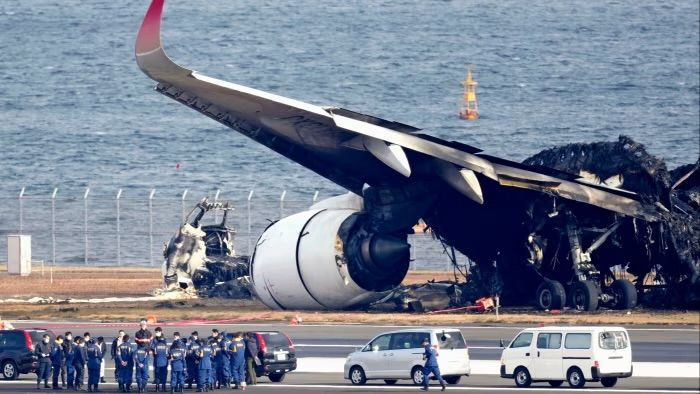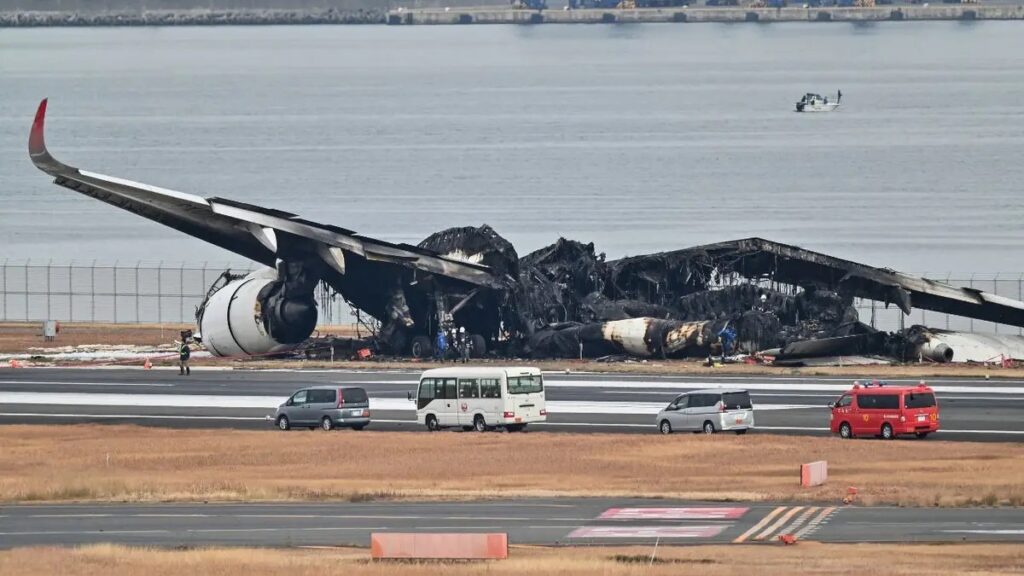
Five of the six crew on board the Coast Guard’s turboprop Dash-8 were killed when it was struck by the Airbus A350 as the passenger plane came in for landing on Tuesday evening.
Remarkably, all 367 passengers and 12 crew were safely evacuated from the commercial plane before the fuselage burst into flames on the tarmac.
The Japan Airlines crew has been applauded for executing a “textbook” evacuation that potentially saved hundreds of lives, but the incident has put the airport’s safety procedures in the spotlight.
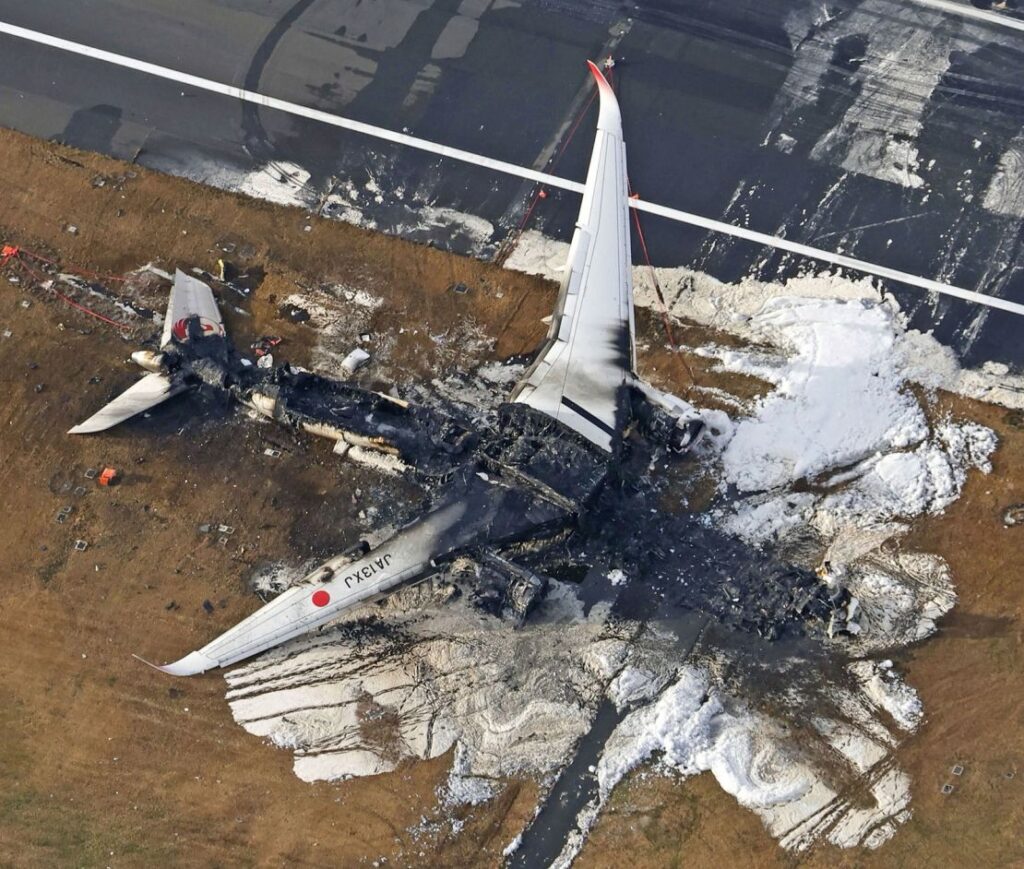
There are some suggestions that fatigue could have been a factor that contributed to a miscommunication with air traffic control.
Reuters reported this week that the Coast Guard plane had completed several emergency flights delivering aid to earthquake zones in the 24 hours before the collision.
The Japan Transport Safety Board is conducting a formal investigation into the crash, with cooperation from Japan Airlines, the Coast Guard, and Airbus technical advisors.
Police are also carrying out a separate inquiry into whether professional negligence played a role in the collision.
In the meantime, aviation experts are urging passengers to heed the lessons from this disaster.
How quick-thinking cabin crew evacuated 367 passengers in 20 minutes
Videos taken by passengers onboard the plane show a scene of unfolding horror.
As smoke fills the cabin, an orange glow can be seen outside the windows.
“Please get me out of here!” one woman says.
“Please, why don’t you just open [the doors],” a child rather politely inquires.
Despite the potential for mass panic, the flight attendants can be heard urging everyone to “please cooperate” and evacuate the plane without stopping to collect their carry-on luggage.
They had everyone down the inflatable slides and off the plane swiftly, with the last crew member off the plane within 18 minutes of the collision.
Witnesses say just 10 minutes after the last person left the craft, it was engulfed in flames.
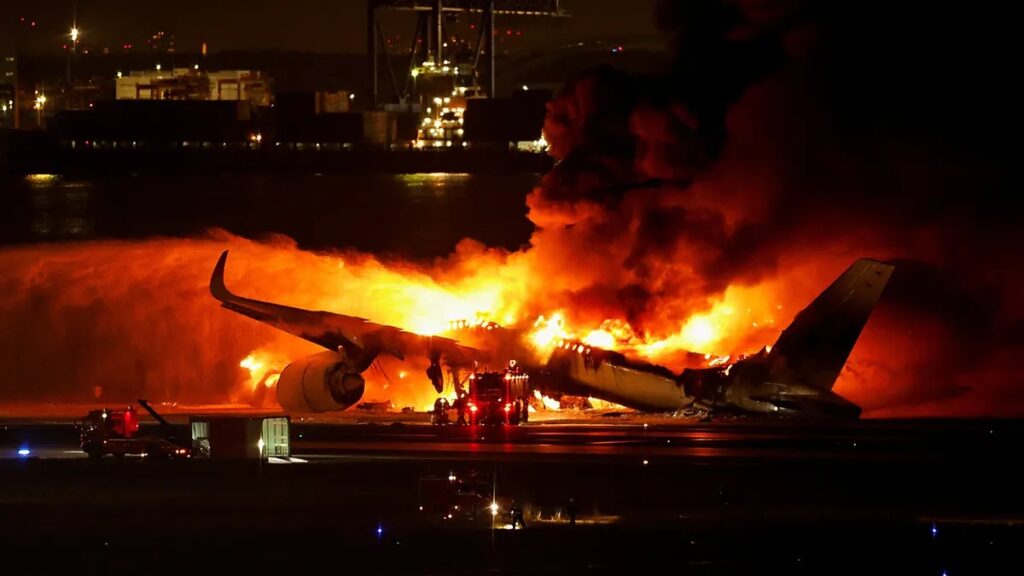
In its certification, Airbus Air was required to prove that its A350 aircraft could be evacuated in less than 90 seconds using half of the exits on the plane.
The certification process involves recruiting volunteers, some of whom carry dolls the same size and weight as children, to carry out a simulated evacuation.
While the escape from JA516 took much longer than 90 seconds, it appears that the flight crew had to spend time assessing which of the plane’s eight exits were safe to use.
With five of the exits inaccessible, including one that was engulfed in flames, all passengers and crew managed to escape through three exits.
Silvia Pignata, a senior lecturer in aviation at the University of South Australia, said the safe evacuation of all passengers on board was “miraculous”, and noted that the crew may have been slowed down by difficult circumstances.
“First of all, the cabin crew had to ask the pilots for permission to be able to open the exits, so that’s an issue that perhaps can be looked at in the future,” she told the ABC.
The cabin crew also had to resort to using megaphones after the internal public address system stopped working.
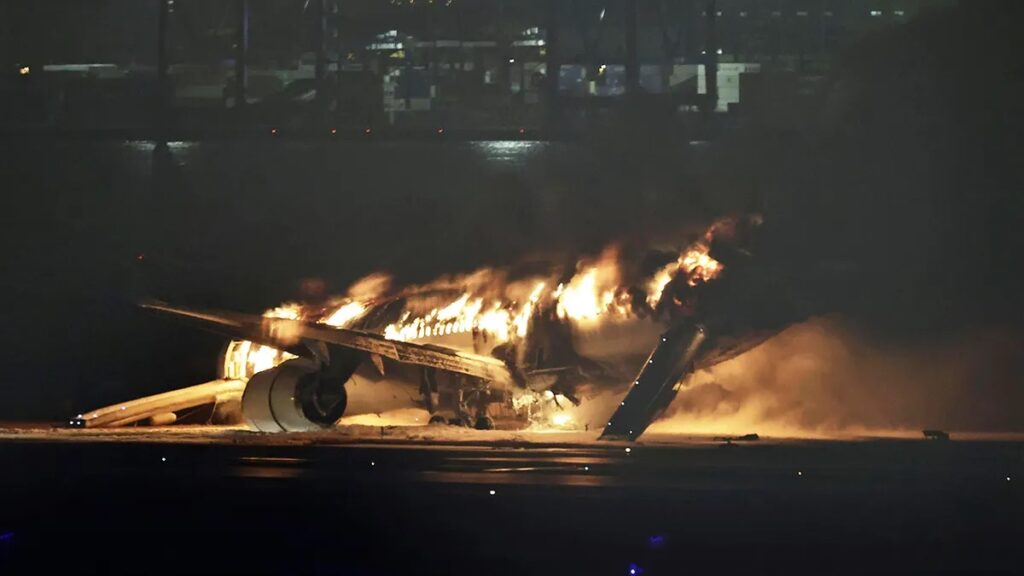
Dr Pignata praised the passengers on board for swiftly following directions and leaving luggage behind, suggesting that cultural factors may have made all the difference.
“In Japanese culture, people really respect authority,” she told the ABC.
“They [were] probably more compliant than if this incident had happened in a more Western country, where people aren’t so [inclined to] adhere to rules, regulations and commands.
“So I think there was also a cultural aspect that enabled the evacuation to be undertaken so smoothly.”
Aviation experts have long warned that stopping to retrieve bags during an evacuation can be the difference between life and death.
The US National Transportation Safety Board (NTSB) conducted a survey of passengers and flight attendants involved in 46 different evacuations in 2000.
The NTSB found that almost 50 per cent of people in an evacuation had tried to take a piece of luggage with them.
Those surveyed said that passengers retrieving bags was the biggest cause of delays.
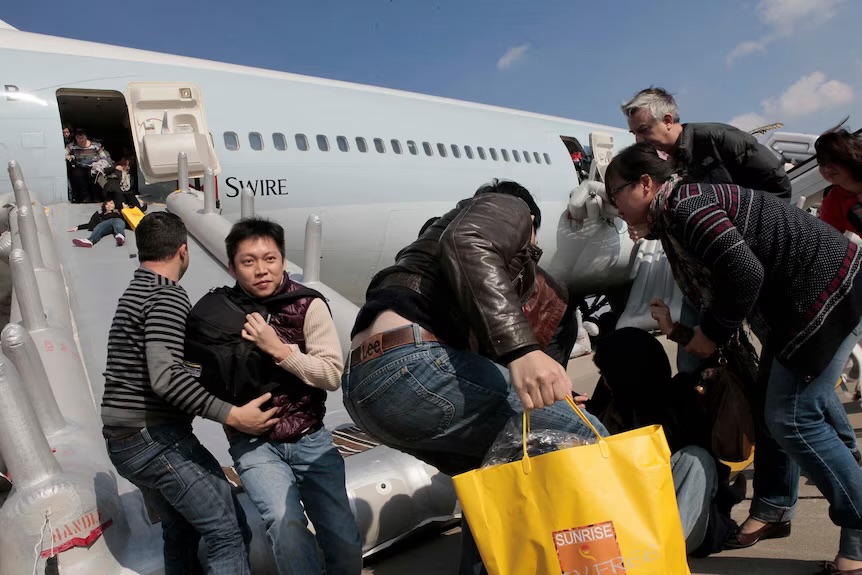
ow. (China Out/AFP)
Flight attendants reported ending up in screaming matches with people holding up everyone else’s chance of escape because they wouldn’t leave without their belongings.
In one evacuation, a passenger tried to take their guitar with them.
When hundreds of people board a space as narrow as a plane, much will be out of their control.
The one thing they can do is pay attention to the onboard safety briefing, follow the flight crew’s command, and leave their luggage behind if told to evacuate.
How the aviation industry has learned from previous disasters
Japan’s airports are some of the busiest in the world, and the nation’s major carriers have been consistently rated among the safest in recent years.
That largely blemish-free record is perhaps a result of the tragic lessons learned from the horror crash of Japan Airlines flight 123, the deadliest single-aircraft disaster in aviation history.
In 1985, a 747 carrying more than 500 passengers from Tokyo to Osaka suffered a sudden structural failure and crashed into Mount Takamagahara, killing all but four people on board.
